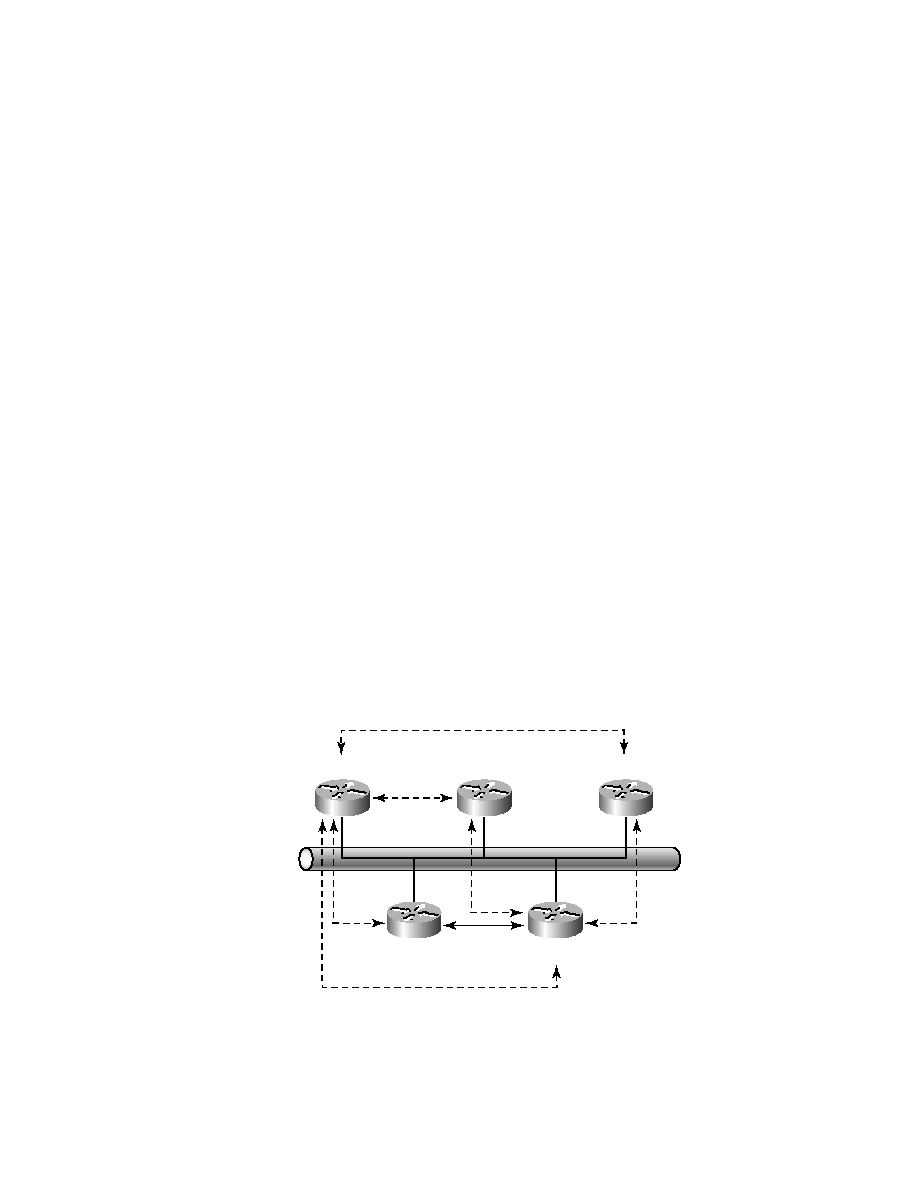
120
Chapter 4
OSPF Areas
Adjacency Requirements
Once neighbors have been identified, adjacencies must be established so that
routing (LSA) information can be exchanged. There are two steps required
to change a neighboring OSPF router into an adjacent OSPF router:
Two-way communication (achieved via the Hello protocol)
Database synchronization--this consists of three packet types being
exchanged between routers:
Database Description (DD) packets
Link State Request (LSR) packets
Link State Update (LSU) packets
Once the database synchronization has taken place, the two routers are
considered adjacent. This is how adjacency is achieved, but you must also
know when an adjacency will occur.
When adjacencies form depends on the network type. If the link is point-
to-point, the two neighbors will become adjacent if the Hello packet infor-
mation for both routers is configured properly.
On broadcast multi-access networks, adjacencies are formed only
between the OSPF routers on the network and the DR and BDR. Figure 4.2
gives an example. Three types of routers are pictured: DR, BDR, and
DROther. DROther routers are routers that belong to the same network as
the DR and BDR but do not represent the network via LSAs.
F I G U R E 4 . 2
OSPF adjacencies for multi-access networks
Ethernet
DR
DROther
DROther
DROther
BDR
Copyright ©2001 SYBEX , Inc., Alameda, CA
www.sybex.com
